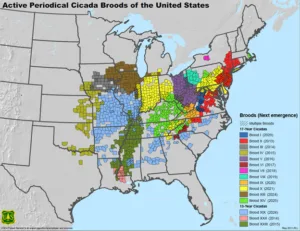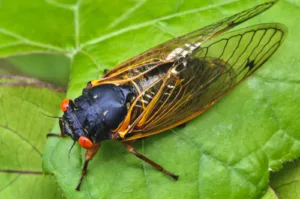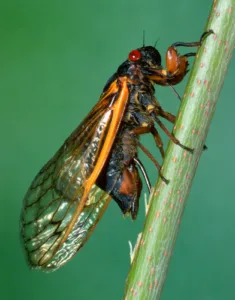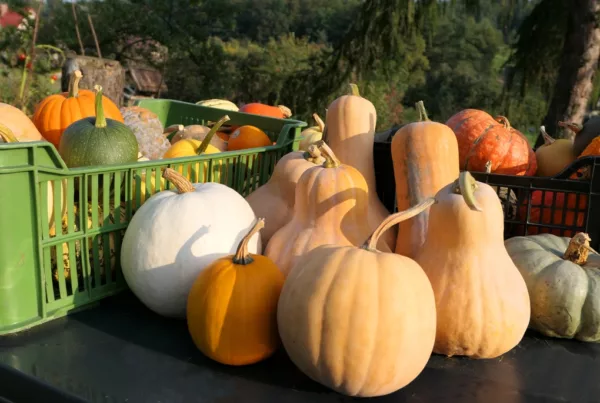Written by Kristina Hicks-Hamblin
1. What Is Cicada-Geddon?
Living most of its long life under the ground, a periodical cicada comes out of the soil only every 13 or 17 years, and with plenty of company. From April to June 2024, two groups of these insects (called “broods”) will emerge in mass numbers in the eastern half of North America, nearly simultaneously.

USDA Forest Service Brood Map
2. Coming Soon to a Town Near You?
You may be fearing the worst for your Square Foot Garden from the upcoming cicada emergence – but these broods may not even live near you! Check the map – only Brood XIII and Brood XIX are emerging this year, indicated in light blue and dark brown on the map.
3. Is This a Weird Double Whammy?
Two broods emerging at the same time isn’t the norm, but it isn’t exactly rare either. Brood XIII (17 years emergers) and Brood XIX (13 year emergers) live in different places and there will be very few locations where both are present at the same time.
4. When to Expect Them
With the rising temperature of the soil in spring cueing these insects to emerge from holes in the ground, southern populations come out earlier than northern ones. Those in the southern range emerge starting in April while those at the northern end of the range may not come out until June.
5. Emerging and Molting
The brood will come out after sunset as non-flying nymphs over a period of one to a few nights in each location. Nymphs climb about a foot up a tree, then stop to molt. But their new exoskeletons are soft, and they have to wait for a few hours for them to harden before they can move on.
 6. Cicadas Are Not Locusts
6. Cicadas Are Not Locusts
While these insects are often referred to as “13-year locusts” or “17-year locusts,” these names are misleading. Although both cicadas and locusts are insects, locusts are types of grasshoppers with narrow bodies, while cicadas are wider and flatter. And unlike locusts, cicadas don’t jump – and they don’t eat grain crops.
7. What Do They Look Like?
In their adult forms, periodical cicadas are approximately one and a half inches long and have black bodies and large, red eyes. They also have orange wing veins – unlike annual cicadas which have green wings. And by the way, cicadas don’t bite or sting.
8. How Long Do They Live?
Ten days after emerging, cicadas mate. After mating, females go around making holes in trees to lay their eggs. In all, these insects’ above-soil lives are only three to four weeks long, but since some come out earlier and some later, in a given area, periodical cicadas will be in the neighborhood for four to six weeks.
 9. Should You Worry About Your Garden?
9. Should You Worry About Your Garden?
Square Foot Gardeners needn’t worry about their veggies and herbs – cicadas only target woody plants. Pencil sized stems are where females lay their eggs, so trees under 10 feet are at risk and should be protected with netting. Larger trees will recover from the small amount of damage inflicted.
10. What if You Don’t See Any Cicadas?
If your area is a hotspot for 2024 periodical cicadas but you don’t see any, you may be missing their most important requirement – trees! Cicadas rely on trees throughout their life cycles. To support future broods, plant some trees – but be sure to protect saplings during Cicada-Geddon.



